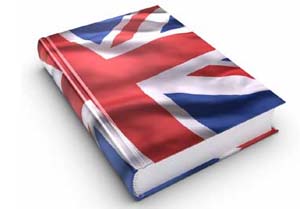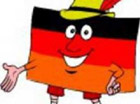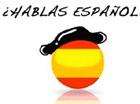 |
|
 |
|
| Visite: 1273 | Gradito: |
Leggi anche appunti:Wilton House - The Palladian IdeaWilton House The Palladian Idea The famous The rise of the novelThe rise of the novel At the end of the 18th century a new literary genre The plot of Robinson CrusoeThe plot of Robinson Crusoe Robinson Crusoe is an Englishman from the town |
 |
 |
Nikola Tesla (1856-1943)
The Serbian-American inventor, electrical engineer, scientist and genius who lit the world
He had 700 patents in the US and Europe. Tesla's discoveries include the Tesla Coil, fluorescent light, wireless transmission of electrical energy, radio, remote control, discovery of cosmic radio waves and use of ionosphere for scientific purposes.
Tesla was from a family of Serbian origin in the small village of Smilijan, Croatia. His father was an Orthodox priest; his mother was unschooled but highly intelligent. Tesla added to these earlier qualities those of self-discipline and a desire for precision.
From an early age he showed an interest in mathematics, mechanics and physics. At nineteen, Training for an engineering career, he attended the Technical University at Graz, Austria and from there went to the University of Prague to study philosophy. At Graz he first saw the Gramme dynamo, which operated as a generator and as electric motor, and he conceived a way to use alternating current to advantage; the idea that electric motors could be run on a more efficient current than direct current (DC) became his obsession. Later, at Budapest, he highlighted the principle of the rotating magnetic field and developed plans for an induction motor that would become his first step toward the successful utilization of alternating current. In 1882 Tesla went to work in Paris for the Continental Edison Company, and, while on assignment to Strassburg in 1883, he constructed, in after-work hours, his first induction motor. Tesla sailed for America in 1884, arriving in New York. He first found employment with Thomas Edison, but the two inventors were far apart in background and methods, and their separation was inevitable. In May 1885, George Westinghouse, head of the Westinghouse Electric Company in Pittsburgh, bought the patent rights to Tesla's polyphase system of alternating-current dynamos, transformers, and motors.
THE BATTLE OF THE CURRENTS:
In the
1880's, there were two types of electrical supply systems in the United States.
One was the direct-current system, developed by Thomas A. Edison, which was
rapidly replacing gas lighting with the newly invented electric light in
commercial areas. The Edison d-c system had the critical disadvantage, however,
that limited its distribution distance to about a mile. The generator voltage
of 250 volts was also the lamp voltage and any increase in lamp load meant an
increase in supply current and conductor size, and with increasing currents
came increasing heating losses.
The second system of electrical supply was alternating current, which was
promoted by George Westinghouse (1846-1914) and his Westinghouse Electric
Company. Alternating current had the unique advantage of raising the voltage at
the generating source with a transformer, and lowering it at the distribution
point also with a transformer. The transmission losses were economically
feasible, and the distance from generator to load was increased from a mile to
many miles depending upon the transmission line voltage. In 1886, for example,
Westinghouse had demonstrated transmission of 500 volts for 4000 feet at Great
Barrington, Massachusetts with a step-down for lights in stores. The a-c
system, however, had the disadvantage of lacking a suitable general purpose a-c
motor. Enter Nicola Tesla to New York City in 1884, three years earlier, had
conceived the idea of a rotating magnetic field that would lead to a practical
alternating current motor. His ideas also included the design of the polyphase
a-c system. He was initially employed by Edison, but was soon at odds over a-c
versus d-c. Tesla's induction motor and polyphase designs would lead to a-c
winning the battle of the currents.
Thanks to Tesla's inventions we have different types of electromechanical machines such as generators and motors.
 |
| Appunti su: |
|
| Appunti Tedesco |  |
| Tesine Spagnolo |  |
| Lezioni Francese |  |